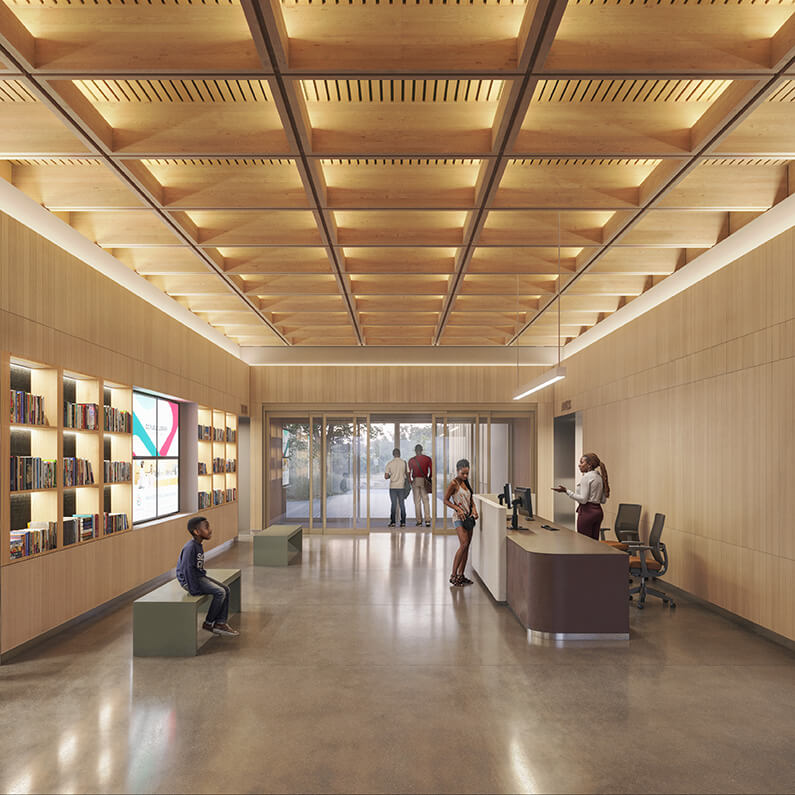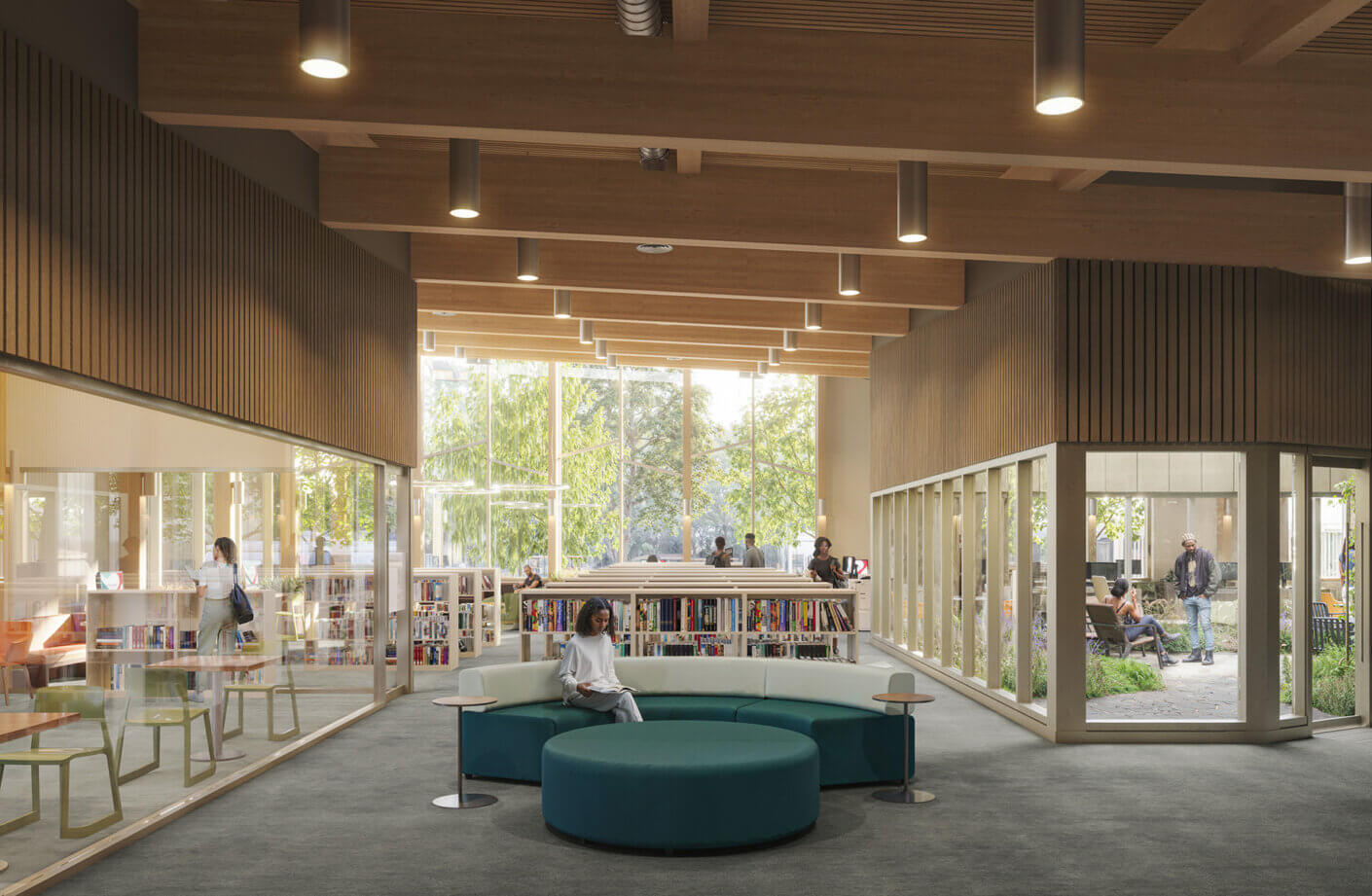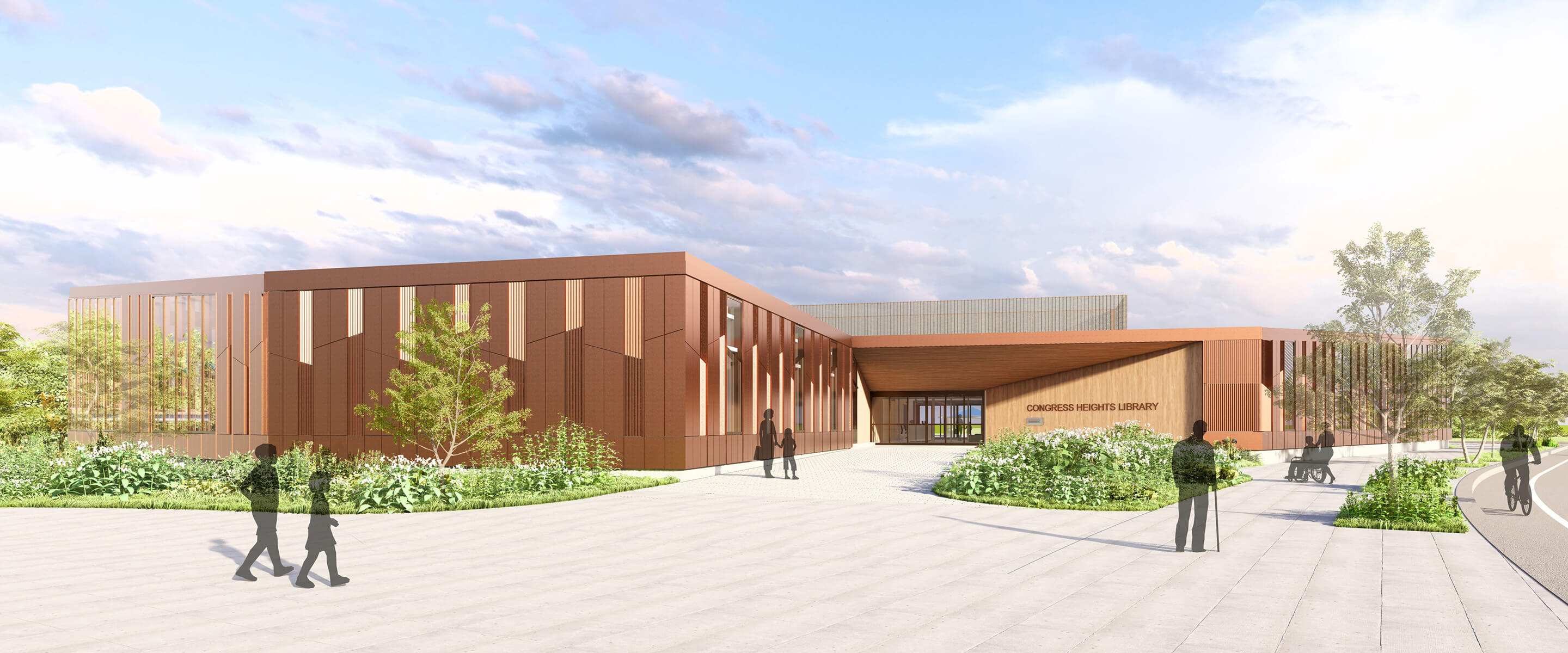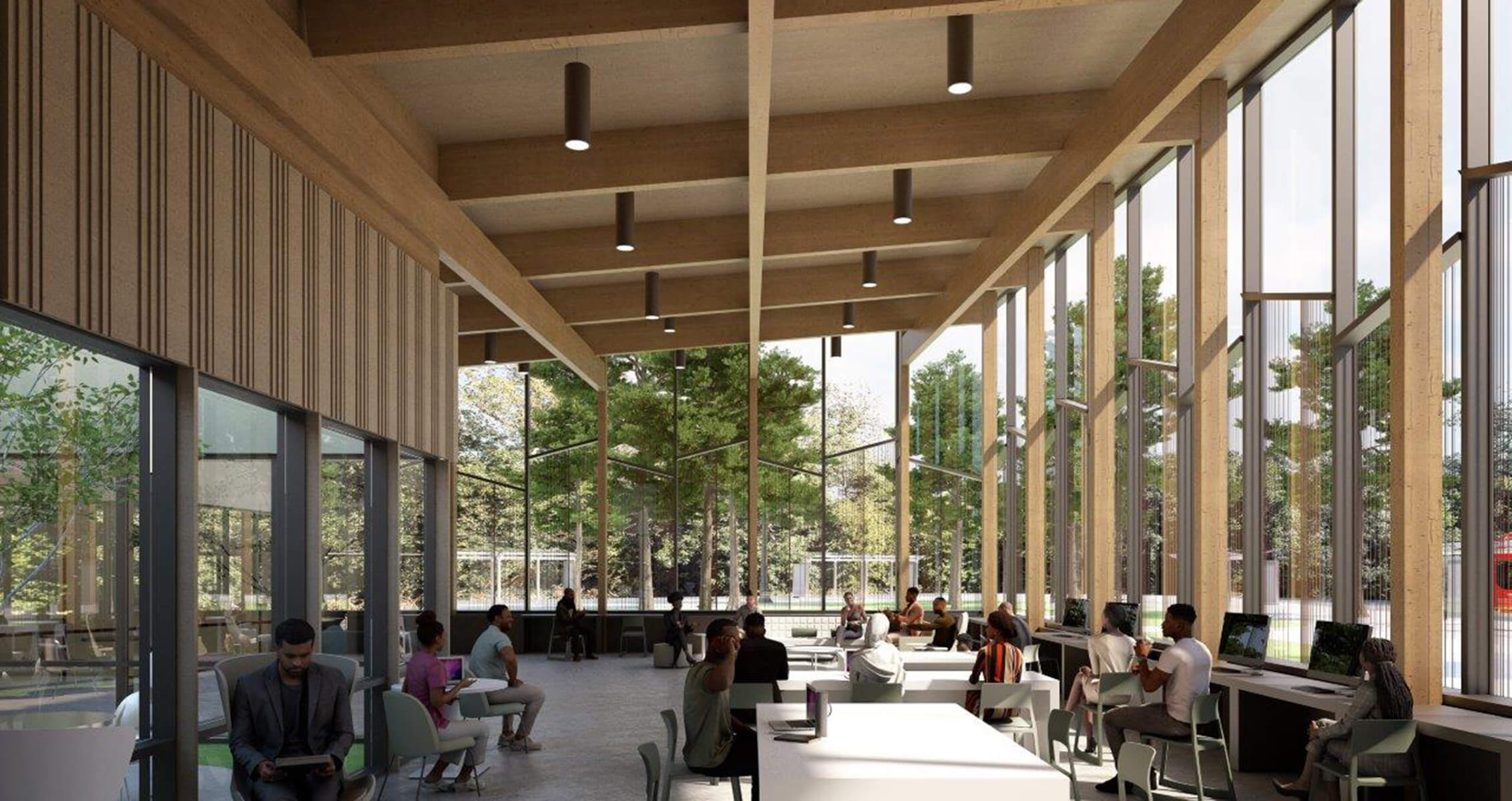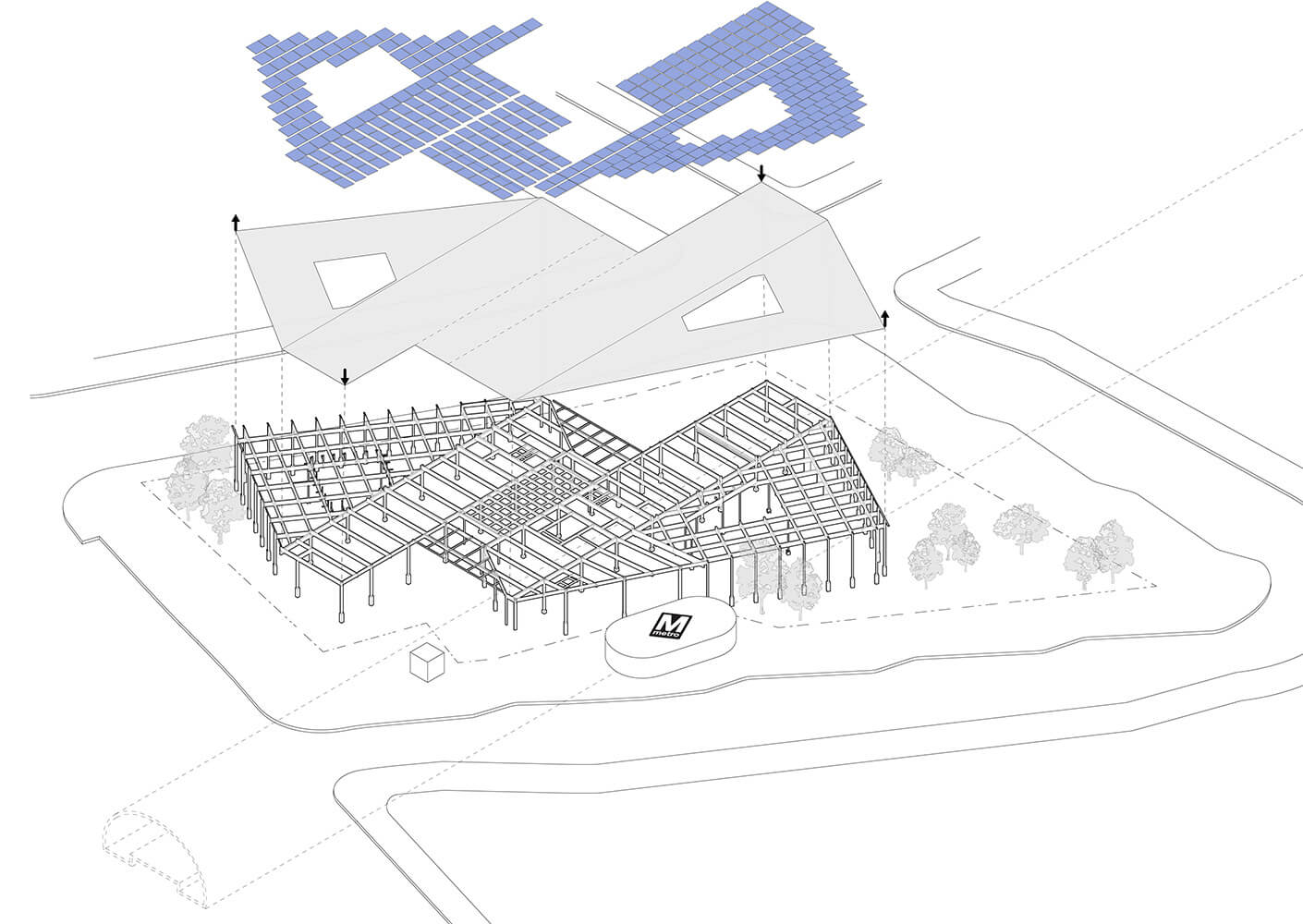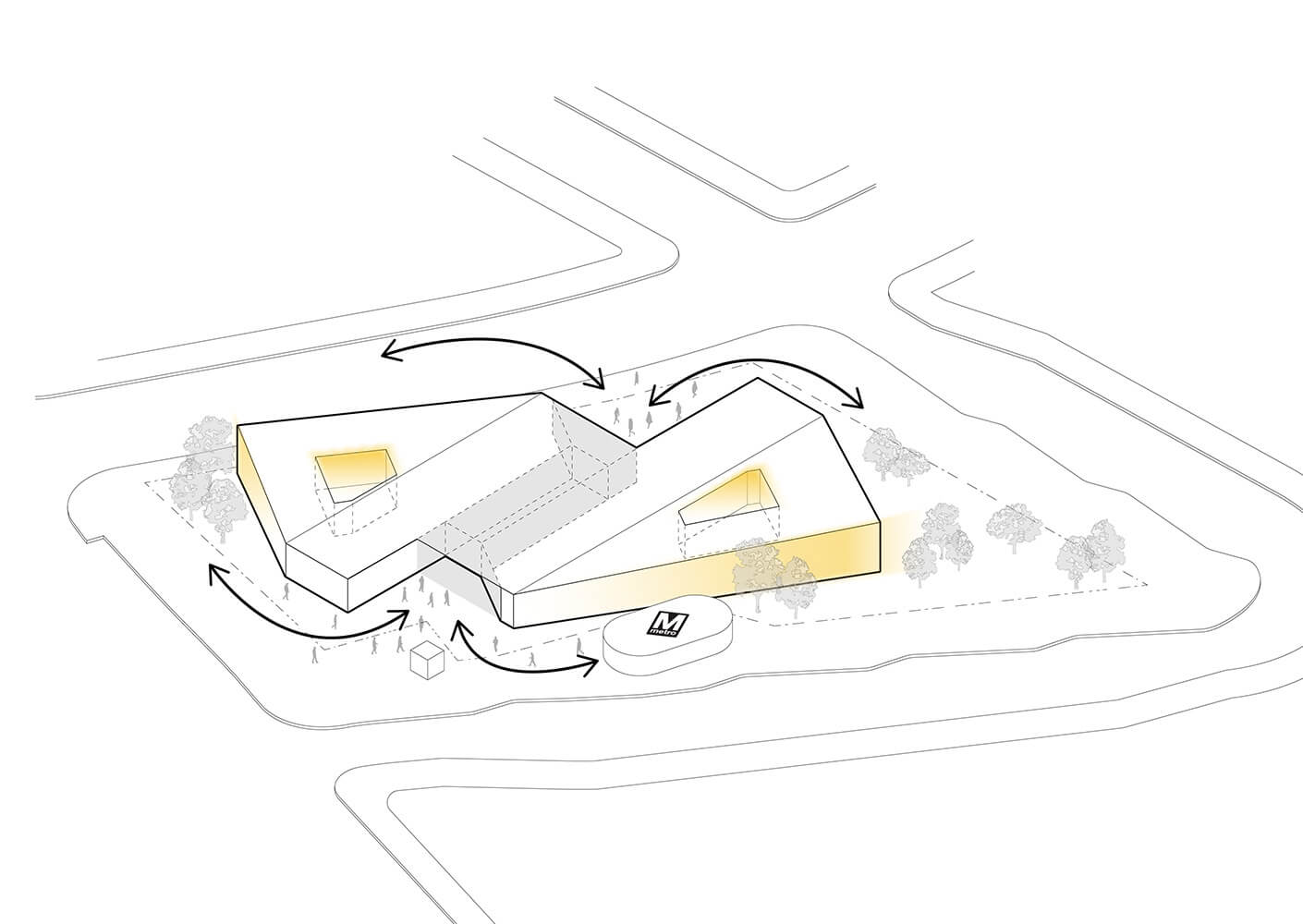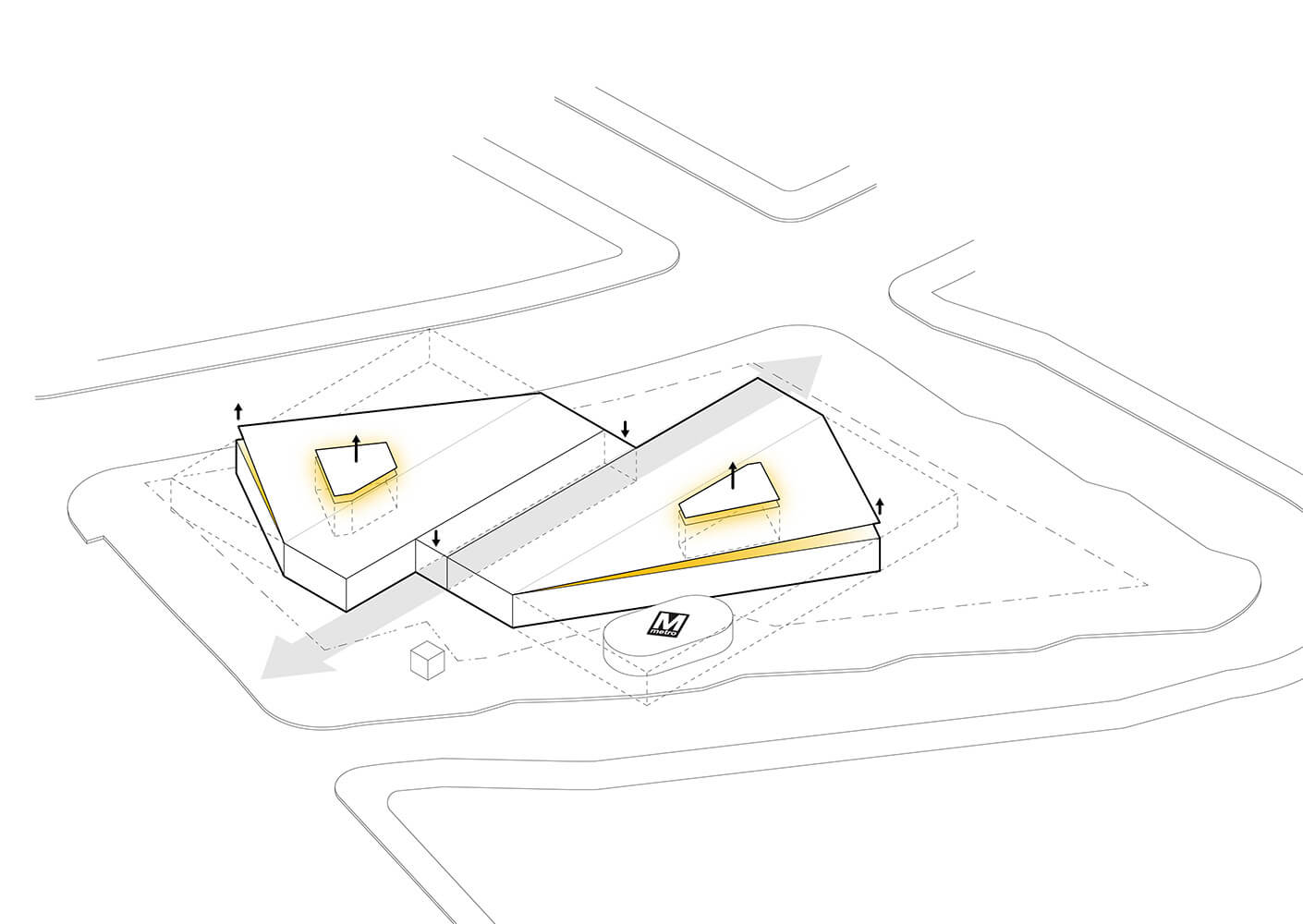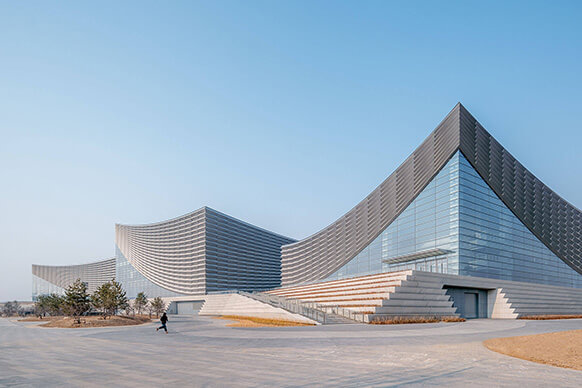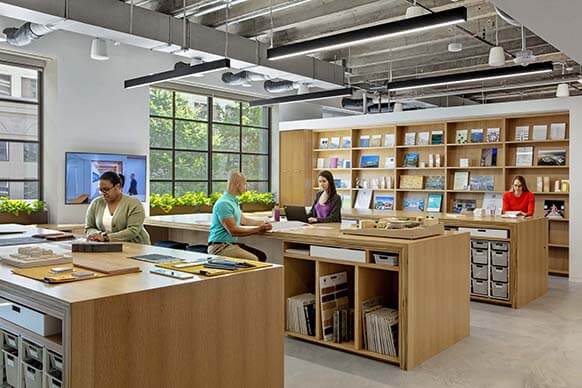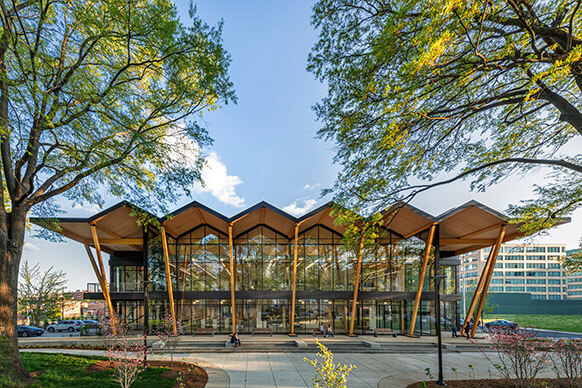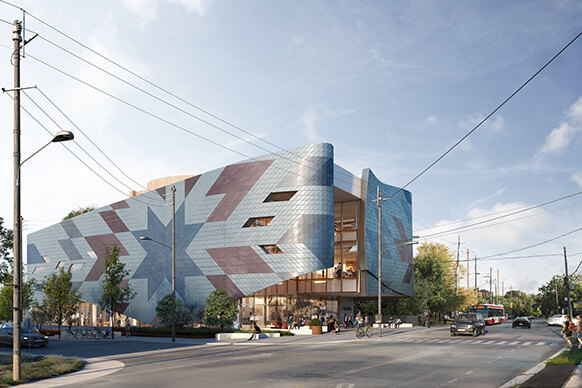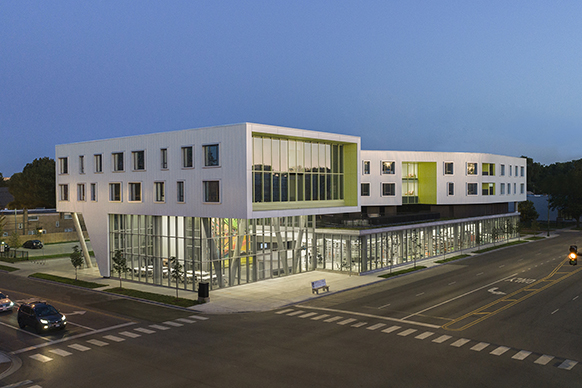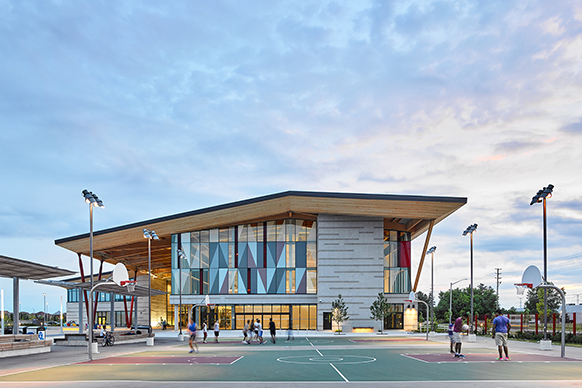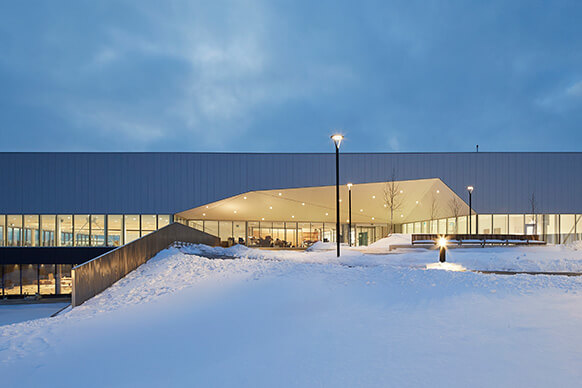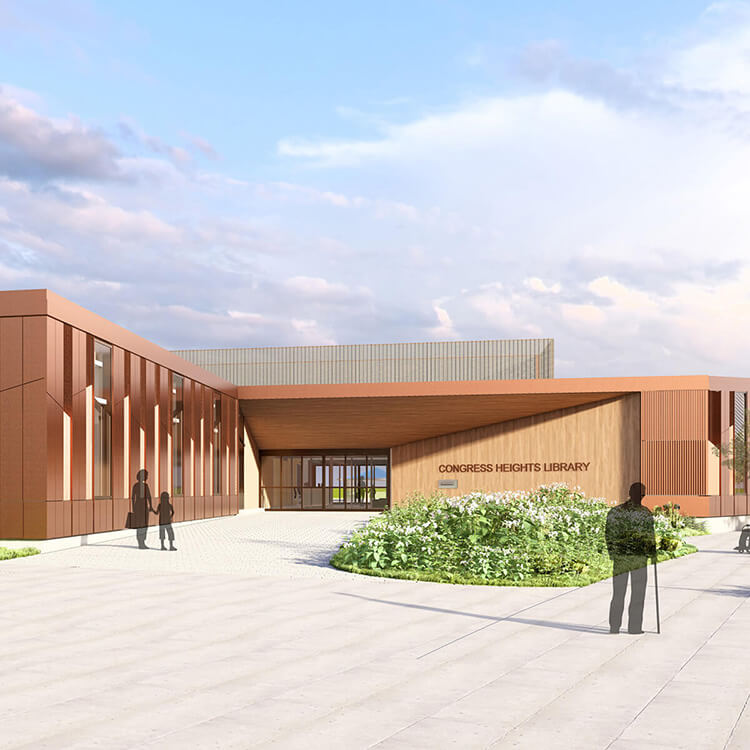
Congress Heights Library
D.C. Public Library has a history of building civic facilities that are extensions of the communities they serve. The new Congress Heights Library is no exception, establishing a sanctuary for the public at the intersection of three neighborhoods: Congress Heights, Parklands, and St. Elizabeth’s East. This library enhances the history and culture of the area by creating a place of community respite on the site of a former transit parking lot located directly above the Congress Heights Metro Station. The 2-acre lot will be transformed into a walkable oasis with lower surface temperatures, native vegetation, and enhanced civic experience.
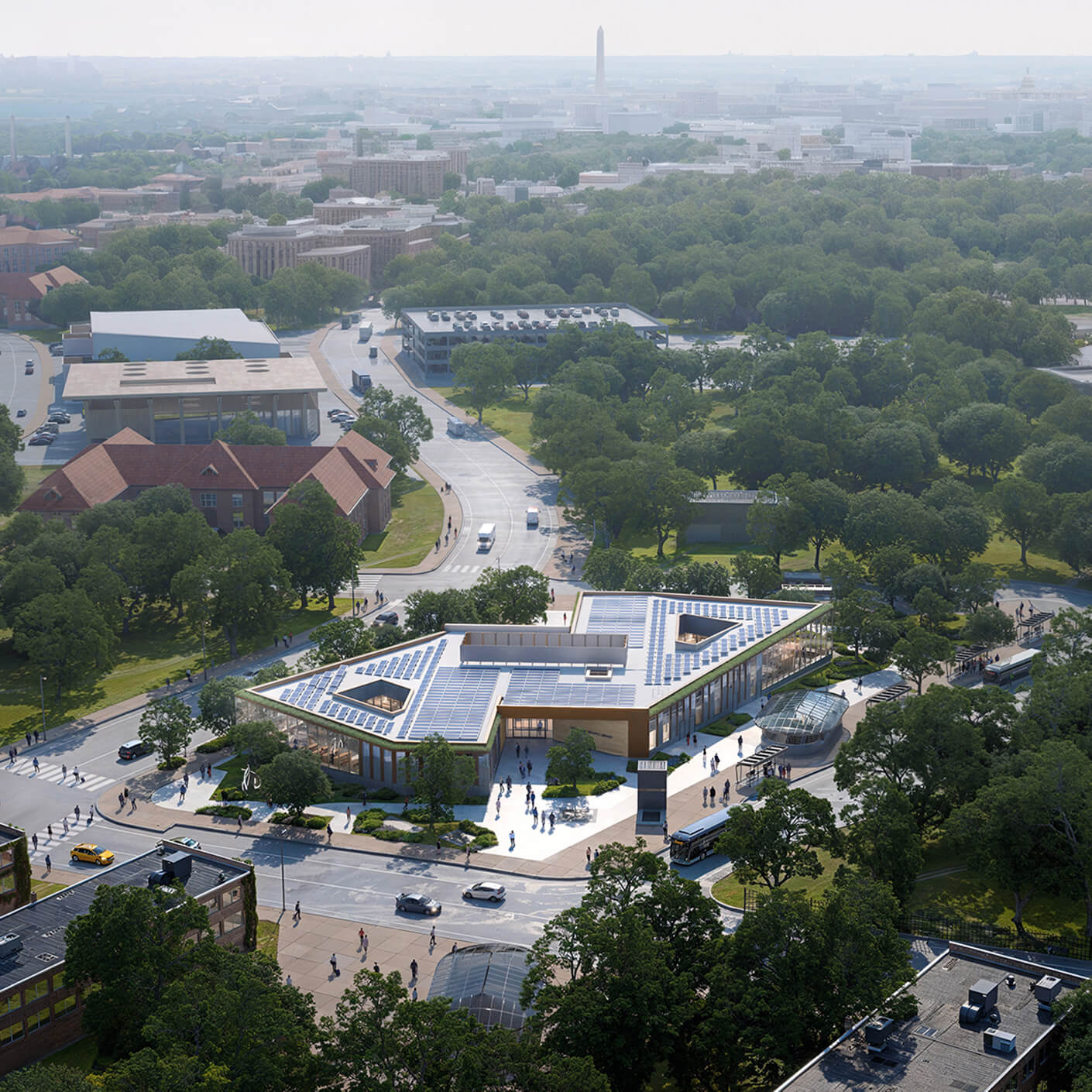
The brownfield site will stitch together three neighborhoods, an idea represented directly by dual entries, a first for the library system. The architectural patterning and details of the project draw inspiration from the timeless design of Washington D.C.’s Metro, while its material palette reflects the brick and terracotta of the nearby historic St. Elizabeth’s Government Hospital for the Insane.
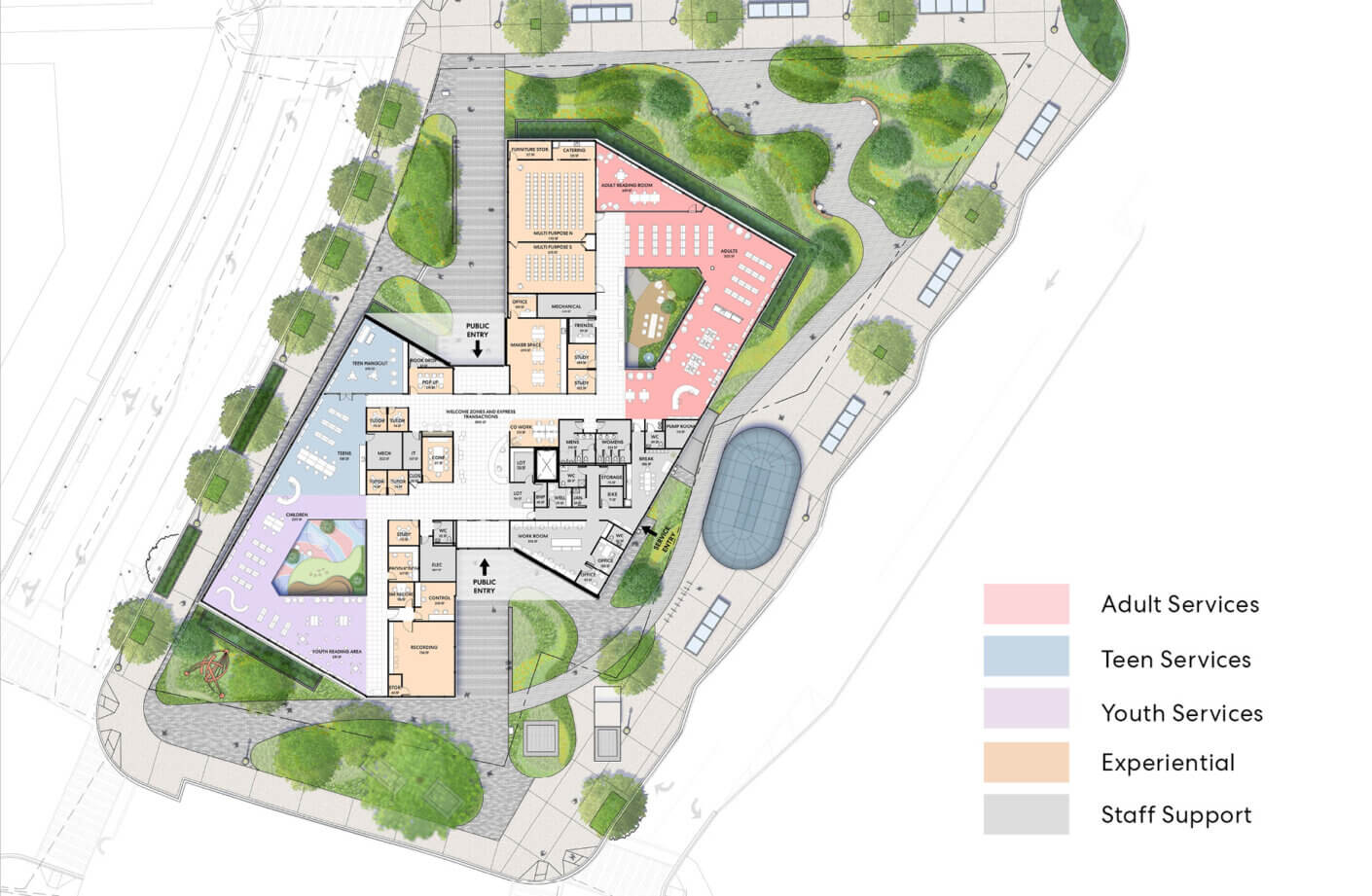
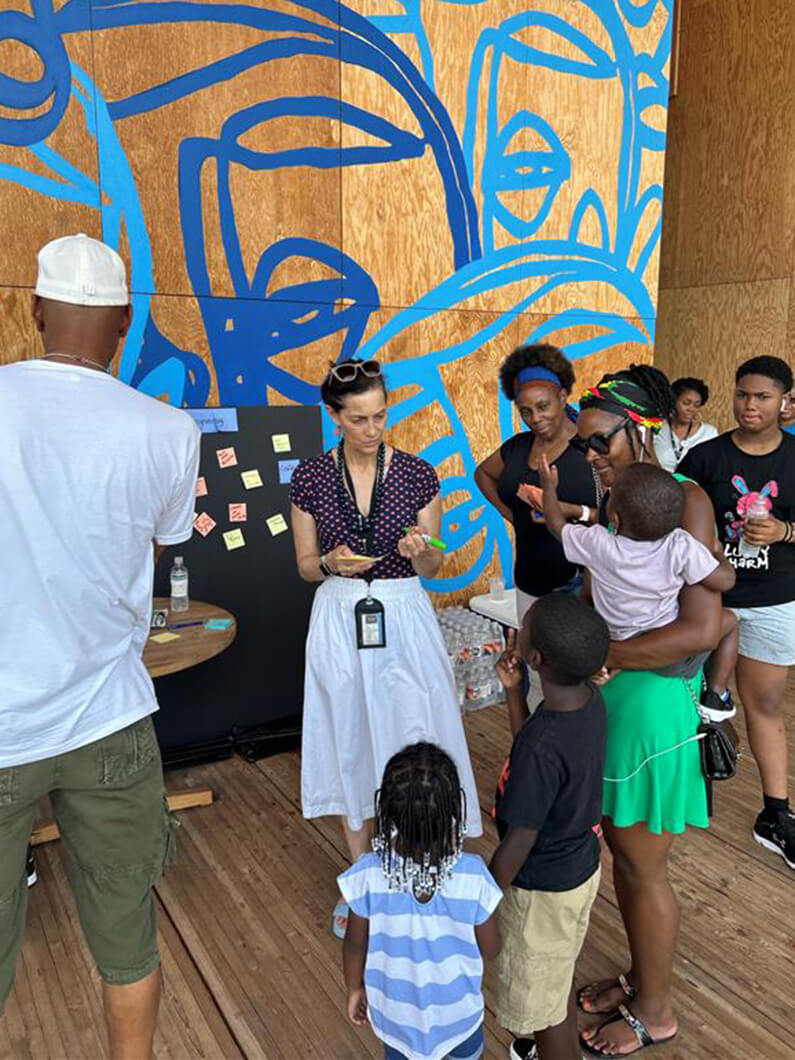
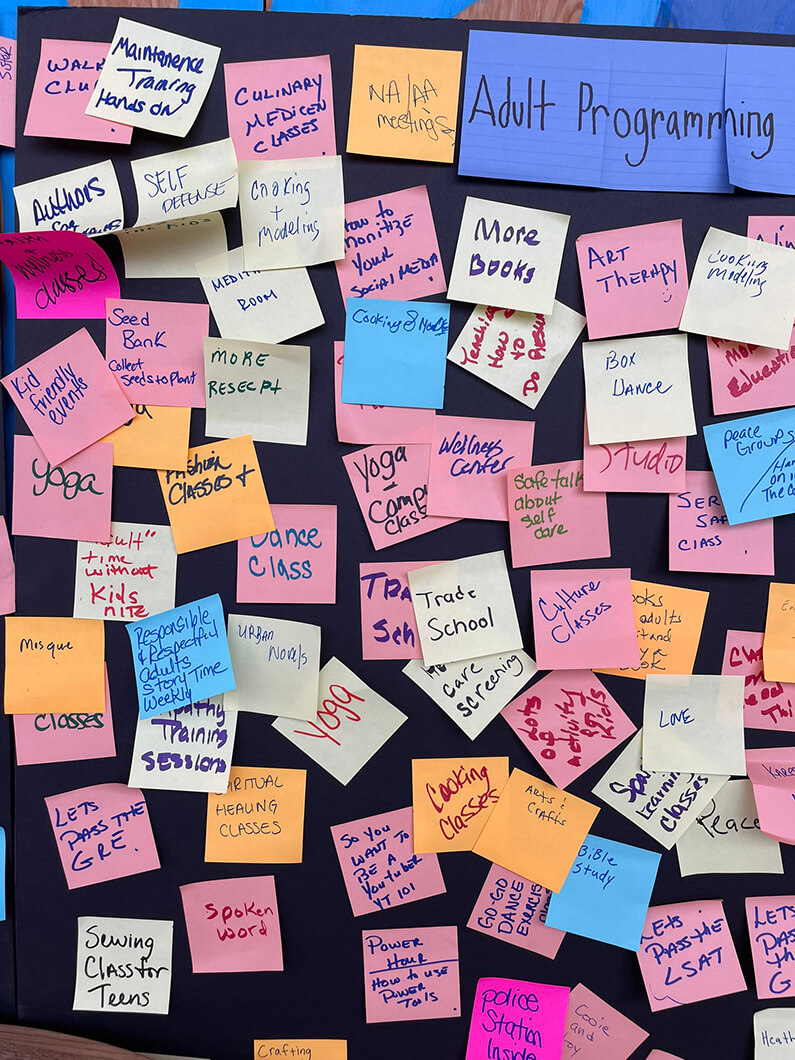
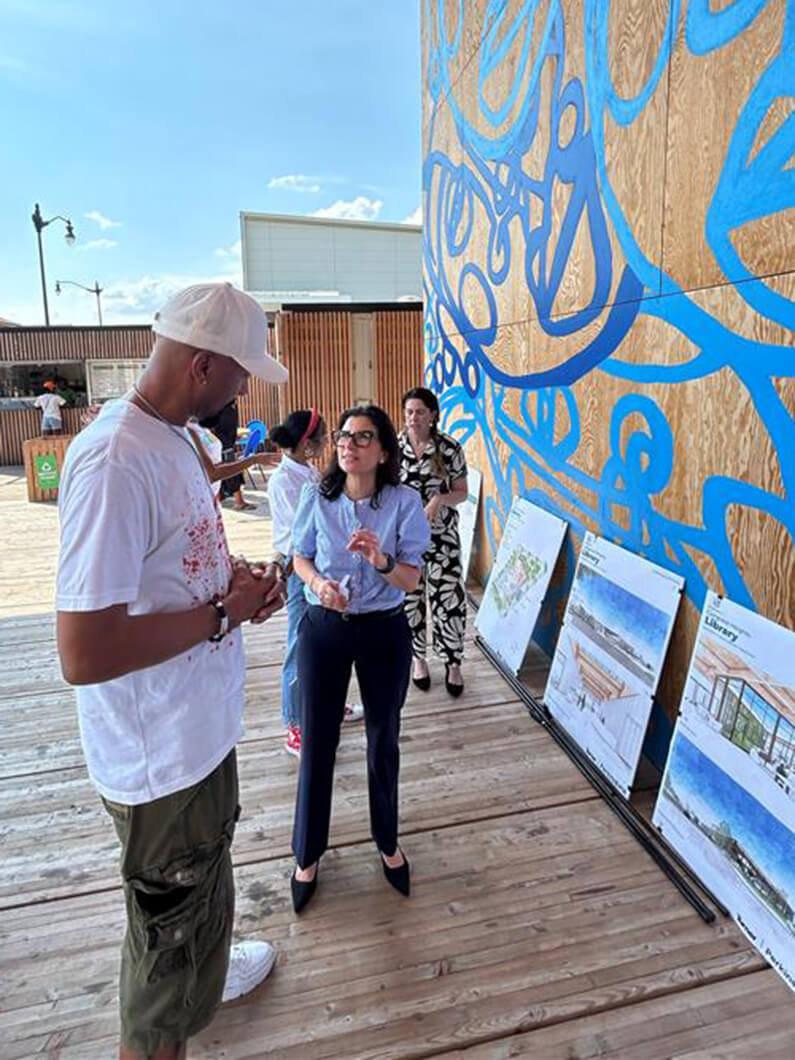
The new building will feature several unique programs designed to support the community which were developed through public engagement and visioning. This includes entrepreneurial, creative, and need-based spaces. Additionally, as the library system’s first new build since the COVID-19 pandemic, interior courtyards will provide an active outdoor children’s space as well as a quiet adult respite area with access to fresh air in a safe environment.
The innovative mass timber structure is designed for both efficiency and beauty, meeting the aesthetic and economic goals of the client. With the metro station’s cavern located forty feet below grade, the unique “buddy lattice” mass timber structure will have a minimal impact on existing infrastructure. The lattice allows for fewer columns, enhancing the visibility and expression in the reading areas.
This is the first net-zero building in the library system. Photo-voltaic solar panels will generate 190,000 kWh/yr of electrical power for the building, contributing to energy performance. Additionally, 600-foot-deep geothermal wells are located in the northeast corner of the site, enabling energy operations with no disruption to the metro below.
